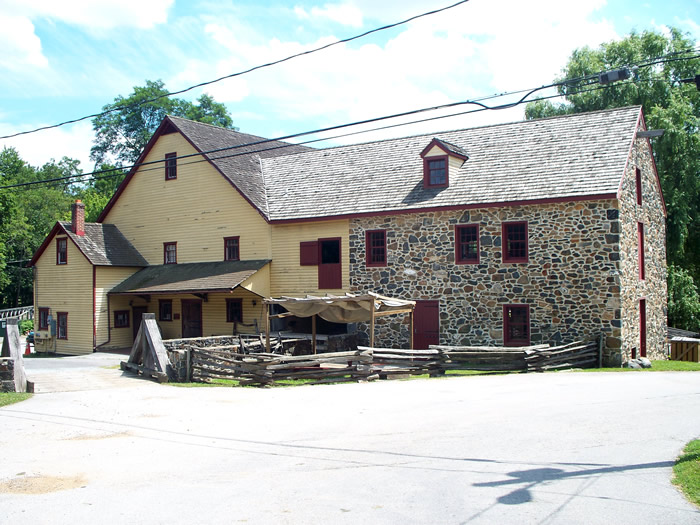
Greenbank Mill & Philips Farm
New Castle Co. | Delaware | USA
Watersource: Red Clay Creek.
Greenbank Mill & Philips Farm
West of Wilmington at the intersection of Sh 2 /Kirkwood Highway and Sh 41 /Newport Gap Road, go north on Sh 41 and turn right on the first road, Greenbank Road, and go about 0.2 miles to the mill on the left.

The very first mill on the Greenbank millseat was called Swede's Mill, built about 1677. The current mill was built in the 1760's as a merchant mill; a mill primarily to grind flour for export to other locations.

The mill was bought at auction in 1790 by Robert Phillips after having declined after the revolution. Philips contacted his neighbor/inventor Oliver Evans in vvans installed his patent process milling system in the Greenbank Mill. Evan's System, Patent #3 of the U.S. patent Office, was developed about a mile from Greenbank Mill along Red Clay Creek, at Red Clay Mill.
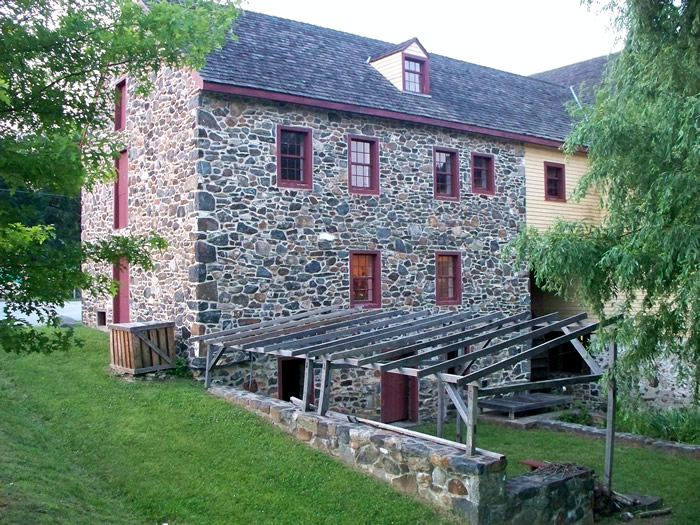
Evan's system consisted of bucketed elevators and augers (screw conveyors) to enable the grain to be taken to the highest foor of the mill. The milling process used gravity to process the grain, from the top floor to the lowest floor, sometimes repeating parts of the process until the desired results were obtained.
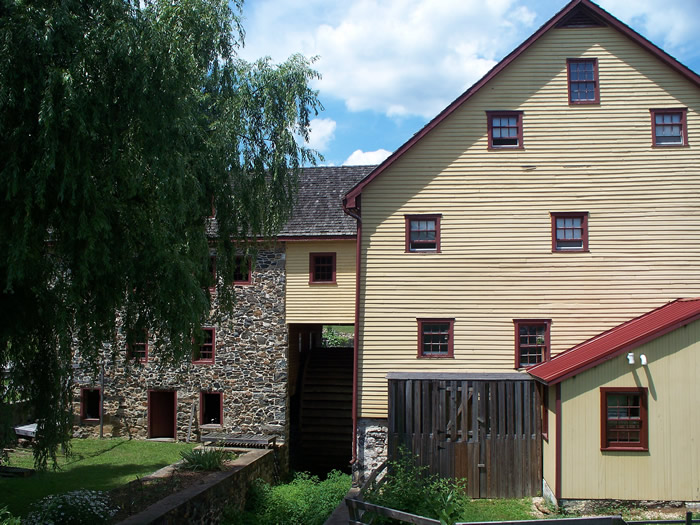
The Evans system enabled the mill to operate with less people, greatly improving on the mills efficiency. A more rapid process of milling enabled expansion & diversification.
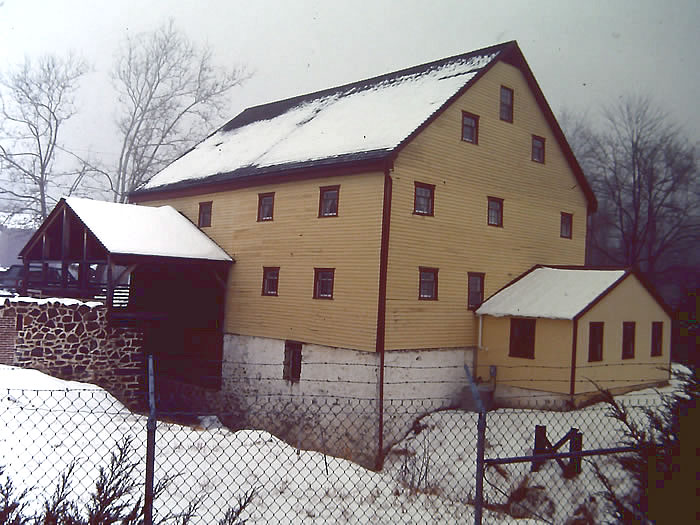
The stone portion was of the mill was built in 1810 as a wool processing mill. A fire in 1969 destroyed the stone Madison Factory/Woolen Mill and the frame grist mill was gutted. The photo of the mill with snow shows the stone woolen mill having not yet been rebuilt in 1990.
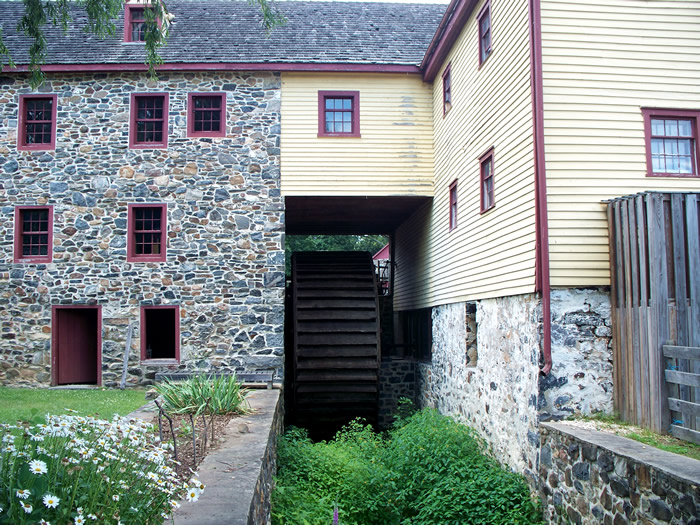
The mill began operating as a gristmill and wholesale-retail feed operation in 1925 under Roy Magaragal. He learned the miller's trade on the job, from truck driver to grinding grain. Mr. Magaragal worked the rest of his life at the mill, even selling feed from the office when the mill burned.
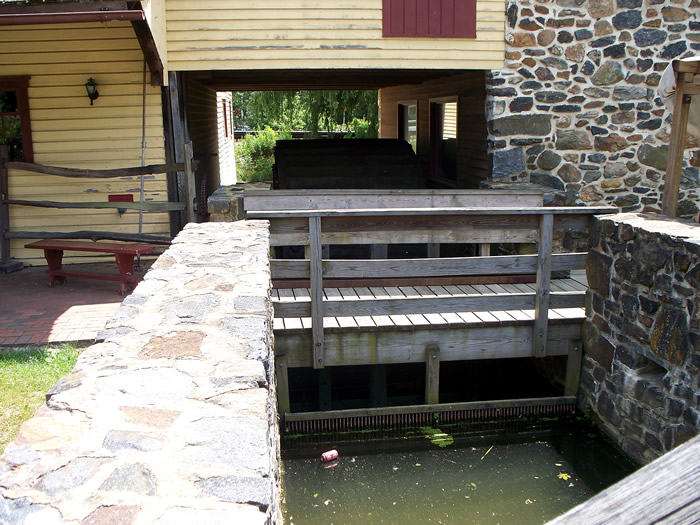
Ther 18 foot water wheel situated between the grist mill and the stone woolen mill, where it could be used to drive the milling mechanisms of both streuctures.
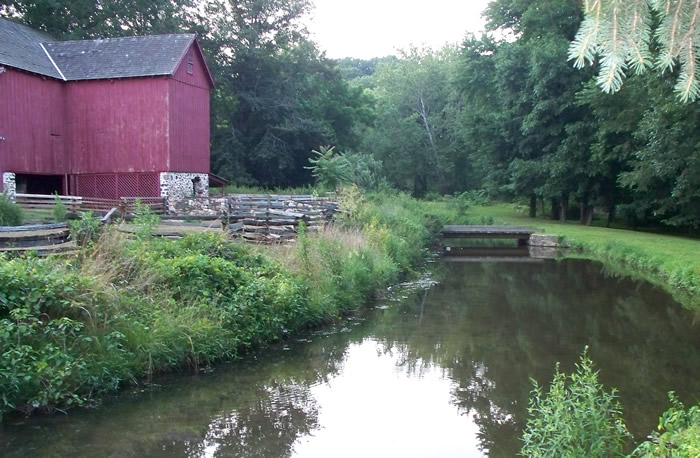
The headrace coming towards the mill complex passed the Philips Farm barn.
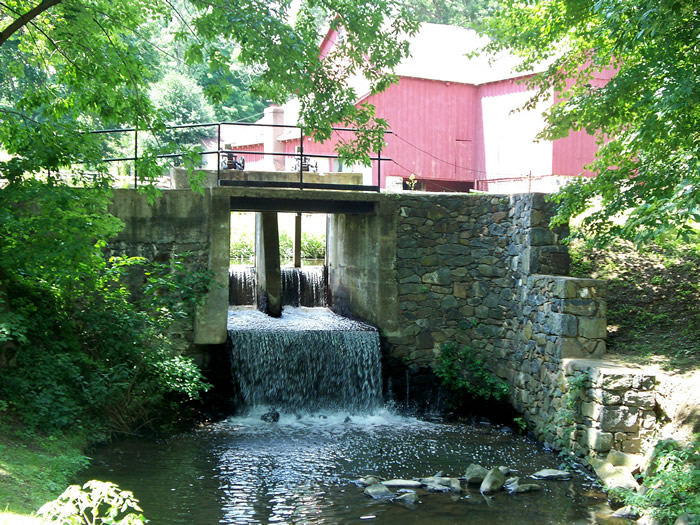
The headrace prior to crossing the road to the mill. The gate is amsystem to draw off water if the floe in the headrace is to high and swift, the excess can be diverted back to the Red Clay Creek.
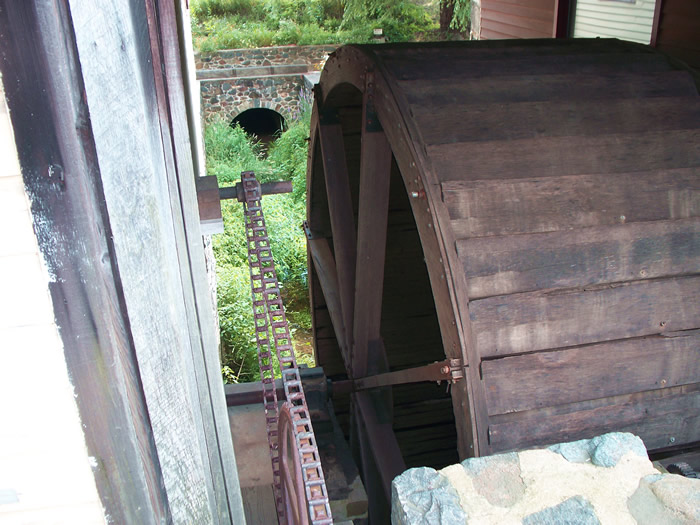
The wheel, situated betwen the two mills with the tailrace area in the background. The bridge carries a road over the tailrace.
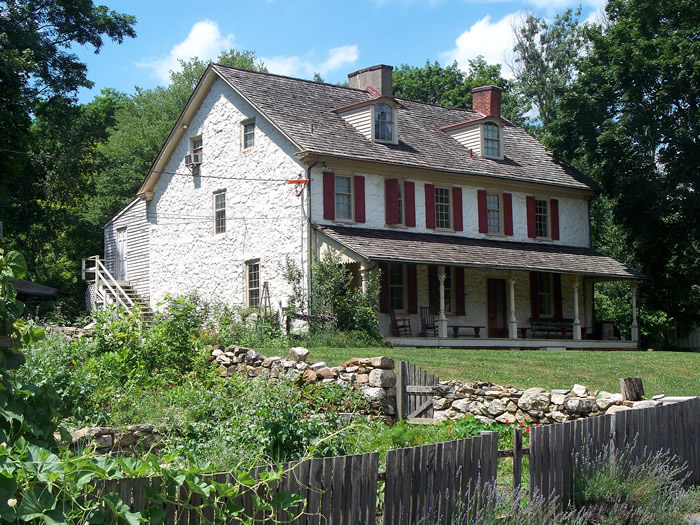
The miller's house, built in 1794 by Robert Philips. See the website, above the first picture, for more information about the mill of the past, the present, and the hopes for the future.

See the website for information concerning Hurricane Floyd in 1999 and the 8.5 inch rainstorm/flood of Sept. 21003, resulting in chest-high water levels in the grist and textile mills.
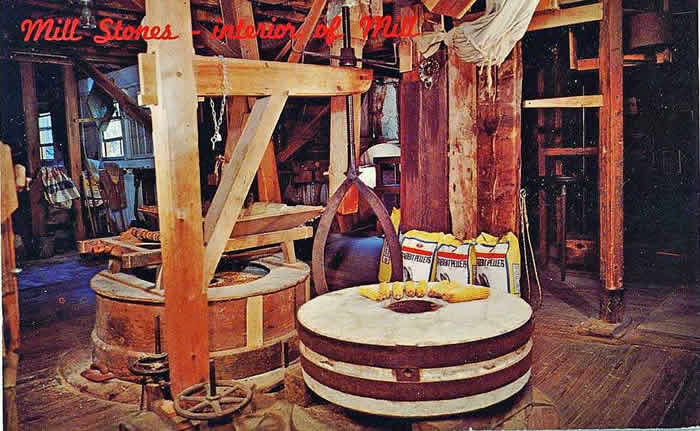
A 1969 color postcard reading: "Water-powered burrstones still grind grain at Greenbank Mill - built in 1790, Greenbank, Delaware, Routes 2 & 41. A preservation of Historic Red Clay Valley, Inc.